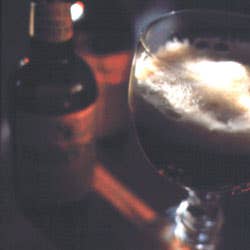
Cellaring Beer
The best beers for cellaring are either bottle-conditioned (i.e., dosed with additional yeast at bottling) or bottled unfiltered so that some residual yeast remains in the container. It is also possible to age selected filtered brews, but these should be at least 7.5 percent alcohol by volume, and even then should not be aged for more than five years.
Some general rules for cellaring beer:
1. Though it may be tempting to seek out beers that already have some age, it's preferable to buy them young and then lay them down yourself, so that you can make sure they're properly stored from the beginning.
2. Bottles with conventional crown caps should be stored upright to prevent contact between beer and capsule; cork-finished bottles should be laid on their sides. (Some Belgian ales are fitted with a cap on top of a cork; these should be laid down.)
3. It is important to age beer in a cool place, preferably climate-controlled (55° to 60° is an ideal temperature range), away from any constant source of light. As is the case with wine, oxygen and light are beer's worst enemies.
4. Cellar as many bottles of each beer as you can—at least a dozen or so. That way, you can monitor their progress by opening one every year—and when the beer seems to have reached its peak, you'll still have a reasonable quantity of it to enjoy.
Keep Reading
Continue to Next Story










